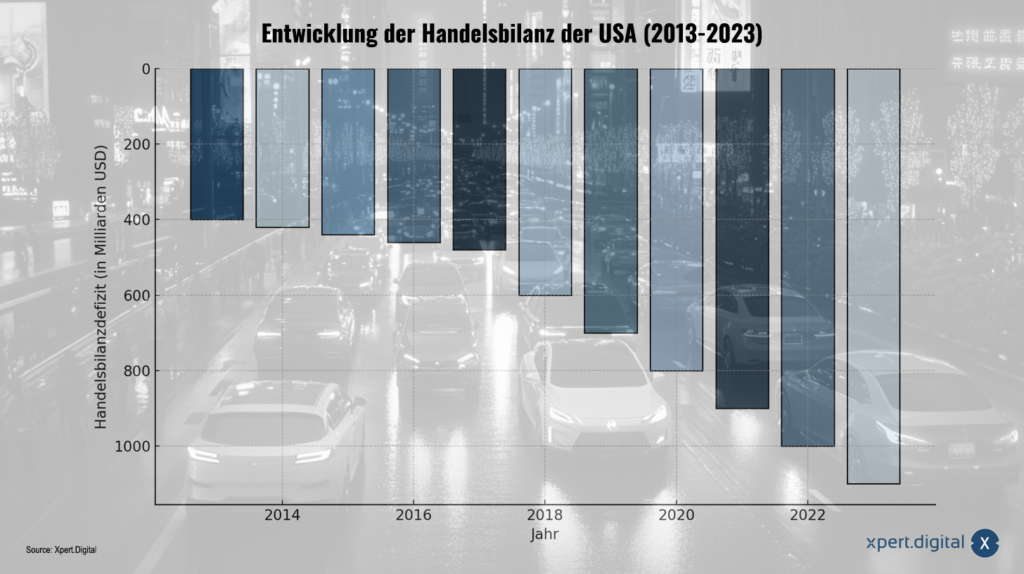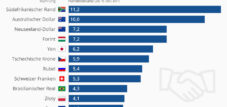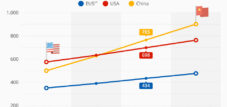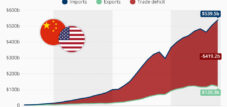Automobiles: Cars continue to be the most important imported goods in the USA
Language selection 📢
Published on: November 21, 2024 / Update from: November 21, 2024 - Author: Konrad Wolfenstein
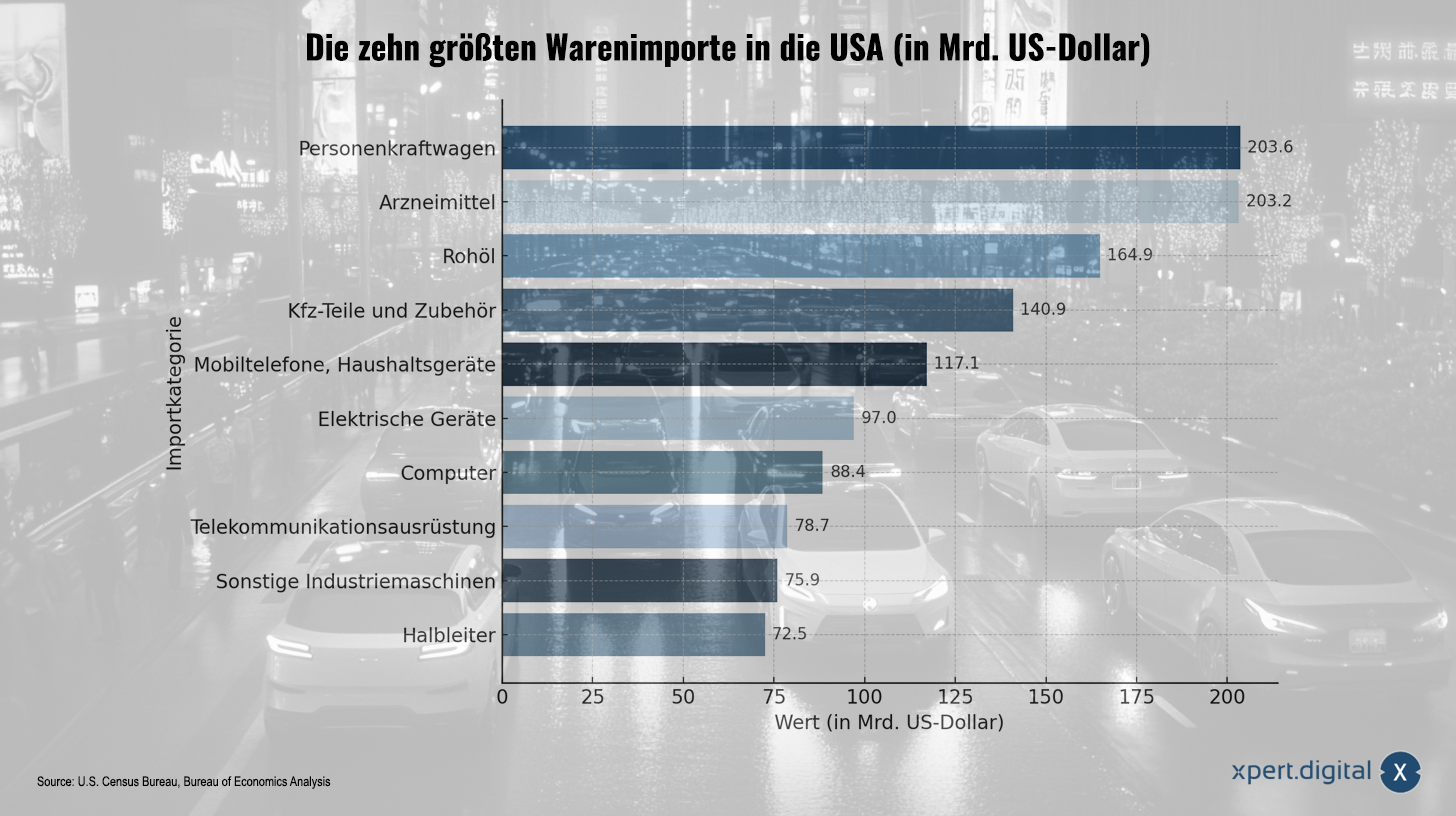
Automobile: In the USA, cars continue to be the most important imported goods - Image: Xpert.Digital
🚗🚙🌟 The United States of America as an important import market
🌟 Automotive industry and international trade relations
The United States of America is one of the largest import markets in the world. In 2022, they imported goods worth around $3.3 trillion. In addition to crude oil, the most important imported goods include automobiles, pharmaceuticals and a wide variety of technologies such as smartphones, computers and semiconductors. These goods are essential for the American economy and the daily needs of the population.
🛠️ Impact of trade conflicts on the economy
Under the administration of President Donald Trump, trade conflicts with important partners such as China and the European Union escalated. By imposing high tariffs on certain imports, the government at the time sought to protect the domestic economy and reduce the trade deficit. However, this led to retaliation from other countries and affected global supply chains.
🖥️ The role of technology and supply chains
Technological developments and global competition in the field of electromobility have further changed the dynamics of international trade. Demand for electric vehicles is increasing worldwide, and countries like China are investing heavily in this technology. The US faces the challenge of expanding its own production of electric vehicles and the associated batteries in order to remain internationally competitive and secure jobs at home.
💊 Pharmaceutical imports and healthcare
Pharmaceutical products are also an important import good. The COVID-19 pandemic has highlighted the importance of safe and reliable access to medical products. The US imports a lot of medicines and medical devices, which can lead to shortages in times of crisis. Strategies to promote domestic production and ensure stable supply chains are therefore of great importance for national health security.
📊 Free trade versus protectionism
The debate about free trade and protectionism is still present in the USA. Proponents of free trade argue that open markets lead to economic growth, innovation and cheaper prices for consumers. Although protectionist measures can protect certain industries in the short term, they lead to higher prices and a decline in competitiveness in the long term.
🤝 Relationships with key trading partners
Relations with Europe and Asia are of great importance for the USA. The European Union is one of the most important trading partners and, despite shared values, there have been tensions over trade practices and regulations in the past. Close cooperation and the reduction of trade barriers could bring significant economic benefits to both sides.
🏢 Impact on consumers and businesses
These developments have a direct impact on the American economy and consumers. Rising prices for imported goods can fuel inflation and reduce consumer purchasing power. Companies that rely on international supply chains face increased costs and uncertainty. Small and medium-sized businesses are particularly affected as they have fewer resources to adapt to changing trading conditions.
🔍 Future prospects of international trade
The future of U.S. international trade remains uncertain. While globalization and international cooperation are essential for many industries, the pressure to protect national interests and minimize economic dependencies is growing. The balance between free trade and protectionism will continue to be a central theme of American economic policy in the coming years.
🔚 Reduce trade deficit without losing the benefits of global trade
The U.S. remains heavily reliant on imports to meet demand for essential goods such as cars, technology and pharmaceuticals. The challenge is to reduce the trade deficit without losing the benefits of global trade. Careful consideration of measures and close cooperation with international partners are essential to ensure economic prosperity and stability.
📣 Similar topics
- 🚗 Role of the automotive industry in US trade
- 📉 US trade deficit and its challenges
- 🌍 The importance of international trade relationships for the USA
- 🤖 Impact of technology and electromobility on retail
- 💊 Pharmaceutical imports and their importance for the USA
- ⚖️ Free trade versus protectionism: A constant balancing act
- 🇺🇸 US trade relations with Europe and Asia
- 🔗 Strategies for diversifying global supply chains
- 🌿 Sustainable technologies and their role in international trade
- 📈 Future prospects for US international trade
#️⃣ Hashtags: #automotive industry #trade deficit #technology #free trade #sustainability
Our recommendation: 🌍 Limitless reach 🔗 Networked 🌐 Multilingual 💪 Strong sales: 💡 Authentic with strategy 🚀 Innovation meets 🧠 Intuition
At a time when a company's digital presence determines its success, the challenge is how to make this presence authentic, individual and far-reaching. Xpert.Digital offers an innovative solution that positions itself as an intersection between an industry hub, a blog and a brand ambassador. It combines the advantages of communication and sales channels in a single platform and enables publication in 18 different languages. The cooperation with partner portals and the possibility of publishing articles on Google News and a press distribution list with around 8,000 journalists and readers maximize the reach and visibility of the content. This represents an essential factor in external sales & marketing (SMarketing).
More about it here:
📉 From plus to minus: The history of the US trade balance over time
🌎📈💡 The evolution of the US trade balance over time: A comprehensive overview
The United States trade balance is a critical indicator of the country's economic health and reflects the relationship between exports and imports of goods and services. Over the years, the U.S. trade balance has moved from a positive balance in the early decades of the 20th century to a persistent deficit. This deficit represents one of the central challenges of American economic policy and has far-reaching effects on the global economy. In this article we examine the historical development, recent trends, and the causes and consequences of this phenomenon.
🕰️ Overview: Historical development of the trade balance
1950s and 1960s: Heyday of the trade surplus
After World War II, the United States experienced economic dominance on a global scale. Industrial production was strong and demand for American goods in world markets was high. This era was characterized by trade surpluses made possible by the export of manufactured goods such as cars, machinery and chemical products. The prosperity of the post-war period and the leading role of the USA in the global economy promoted this positive development.
1970s: Things took a turn for the worse
The 1970s brought a turning point. A decisive factor was the oil crisis, which hit the USA hard. The increase in oil imports led to a significant increase in trade deficits. At the same time, international competition, particularly from Japan and Europe, began to increase. American products became less price and quality competitive, which hurt exports. The trade deficit took shape for the first time.
1990s: Beginning of steady deficit growth
In the 1990s, the trend towards growing deficits increased. As globalization increased and international trade expanded, the United States imported more and more consumer goods, while exports did not increase at the same rate. The technology industry was booming, but many high-tech products were produced in Asian countries such as Japan and South Korea. On average, the trade deficit in this decade was about $185 billion per year.
2000s: Record deficit levels
Globalization reached new heights and the US trade deficit grew dramatically. It reached record levels in the 2000s, with an average deficit of $675 billion per year. A key factor was increased trade with China, which became the “workbench of the world”. The increasing relocation of the production of goods to Asian countries contributed to the USA importing more and more, while its exports remained comparatively small.
📊 Development of the trade balance from 2013 to 2023
Over the past decade, the U.S. trade deficit has continued to worsen, reaching its lowest point in 2023. The following milestones provide an overview of this development:
2013–2016
During this period, the deficit remained relatively stable, ranging between -$450 and -600 billion. A slight decline in raw material prices and moderate export demand stabilized the deficit at this level.
2017–2018
During these years, the trade deficit rose to -678 billion US dollars in 2018. The main reason was increased import demand, due to strong economic growth and increasing consumer spending.
2020
The COVID-19 pandemic led to a short-term decrease in international trade, causing the deficit to fall slightly to -$626 billion. However, this was only a temporary development as global demand for goods and services quickly rebounded as a result.
2021–2023
The trade deficit reached new highs in these years. In particular, in 2023 the deficit was -$1.15 trillion, a historic record. The driving forces were increased demand for imported goods such as electronics and consumer goods as well as weaker demand for American export products.
🔍 Causes of the growing trade deficit
The U.S. trade deficit is the result of a variety of factors, both structural and cyclical. The most important causes can be summarized as follows:
1. High import demand
American consumers often prefer imported goods because they are often cheaper or of higher quality. This particularly applies to electronics, vehicles and household appliances.
2. Dependence on foreign raw materials
Despite increased domestic energy production, the USA remains a large importer of raw materials such as oil, rare earths and metals. This dependency contributes significantly to the deficit.
3. International competitiveness
American products are often more expensive than their international competitors due to high production costs. The high labor cost structure and strict regulations have a negative impact on the competitiveness of the US economy.
4. Role of China
Trade with China is a major factor in the trade deficit. In 2022 alone, the bilateral deficit with China was around $422 billion. China exports a wide range of products to the United States, while American exports to China are limited.
5. Strong US dollar
The value of the US dollar against other currencies is another significant factor. A strong dollar makes American exports more expensive and imports cheaper, further exacerbating the deficit.
🌐 Economic and political consequences
The persistent trade deficit has far-reaching consequences for the US economy and its international relations:
Increase in foreign debt
Due to the deficit, the USA is increasingly indebted to foreign creditors. This could lead to financial instability in the long term.
Relocation of jobs
Imports of foreign products have caused many manufacturing facilities in the United States to close. This has cost jobs, particularly in the manufacturing industry.
Tensions with trading partners
The deficit, particularly in trade with China, has repeatedly caused political tensions. Measures such as tariffs and trade sanctions have been taken to correct the imbalance.
influence on monetary policy
The deficit also influences the Federal Reserve's monetary policy decisions. Sustained high import demand can generate inflationary pressure, which in turn has an impact on interest rate policy.
💼 Possible solutions
To reduce the trade deficit, various strategies could be pursued:
1. Promoting exports
Investments in innovative technologies and improving international competitiveness could increase exports. There is great potential, particularly in areas such as renewable energies and high-tech industries.
2. Reducing import dependency
By promoting domestic production and diversifying supply chains, dependence on imports could be reduced.
3. Trade policy measures
The USA could create fair competition conditions through trade agreements and thus improve access to foreign markets.
4. Investing in education and infrastructure
An educated workforce and modern infrastructure could increase the productivity and competitiveness of the U.S. economy.
🌍📉 US trade balance: On the way to global realignment?
The U.S. trade balance remains a complex and multifaceted issue that has both domestic and global implications. Sustainable improvement requires long-term reforms and a balanced interaction between economic policy, trade and innovation. The future will show how the United States overcomes this challenge and redefines its role in the global economy.
📣 Similar topics
- 📊 From Surplus to Deficit: The U.S.'s Checkered Trade Balance
- 🌍 Global Impact: How the US trade balance affects the global economy
- 🔍 A look back: The development of the US trade balance since 1950
- 📈 Record deficits and their causes: The US trade balance in 2023
- ⚖️ Between China and the USA: The bilateral trade deficit in focus
- 🚀 Future Strategies: Ways to Reduce the US Trade Deficit
- 💼 Political tensions and their economic consequences: An unsolvable dilemma?
- 🏭 Relocated jobs: The dark side of the trade deficit
- 💡 Innovation is key: Ways to boost US exports
- 🏛️ The role of trade and monetary policy in the US economy
#️⃣ Hashtags: #Economy #Trade Balance #USA #Globalization #Innovation
We are there for you - advice - planning - implementation - project management
☑️ SME support in strategy, consulting, planning and implementation
☑️ Creation or realignment of the digital strategy and digitalization
☑️ Expansion and optimization of international sales processes
☑️ Global & Digital B2B trading platforms
☑️ Pioneer Business Development
I would be happy to serve as your personal advisor.
You can contact me by filling out the contact form below or simply call me on +49 89 89 674 804 (Munich) .
I'm looking forward to our joint project.
Xpert.Digital - Konrad Wolfenstein
Xpert.Digital is a hub for industry with a focus on digitalization, mechanical engineering, logistics/intralogistics and photovoltaics.
With our 360° business development solution, we support well-known companies from new business to after sales.
Market intelligence, smarketing, marketing automation, content development, PR, mail campaigns, personalized social media and lead nurturing are part of our digital tools.
You can find out more at: www.xpert.digital - www.xpert.solar - www.xpert.plus




